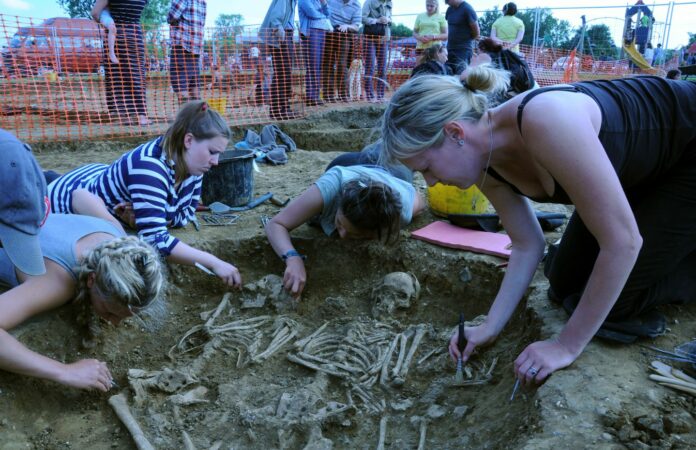A Nature paper says that mass migration from Germany, the Netherlands, and Denmark across the North Sea to Britain during the Anglo-Saxon period may have increased the number of people with European ancestry in Britain to as much as 76%.
The results imply that early mediaeval British society was shaped by migrants from continental Europe.
The history of the British Isles and Ireland is marked by periods of significant cultural change, such as following the Roman era, which led to transformations in language, settlement patterns, manufacturing, architecture, and agriculture, among other things.
However, it is still difficult to determine how many people migrated from continental Europe mediated these cultural changes.
In the past, genome-wide studies have mostly examined the ancestry of modern British people, but they may not be representative of ancient communities with unknown genetic make-up.
Stephan Schiffels, Duncan Sayer, and their colleagues looked at archaeological data and genome-wide ancient DNA from 460 mediaeval people from all over northwestern Europe who lived between 200 and 1300 CE. 278 of these people were from England.
They found that people in early mediaeval England had more ancestors from continental northern Europe. These people were closely related to the people who lived in Germany and Denmark in the Middle Ages and today.
Up to 76% of the genealogy of the people studied in eastern England was traced back to the North Sea region of continental Europe.
After that, there were changes in the population that led to less ancestry from continental northern Europe and more ancestry from southwestern Europe, similar to what was found in Iron Age France.
Additionally, they discovered that women of immigrant origin were more likely than women with local ancestry to be buried with burial items, such as brooches. Men with weapons, on the other hand, were just as likely to be born in the country or come from another country.
The authors say that there is still a lot of northern European ancestry in Britain today, though not as much as in the early Middle Ages. This shows that the “Anglo-Saxon” migrations had a lasting effect on the population.
Source: 10.1038/s41586-022-05247-2
Image Credit: Gretzinger et al. / Springer Nature
You were reading: New Genetic Results Show Medieval Brits Were Only 24% English
